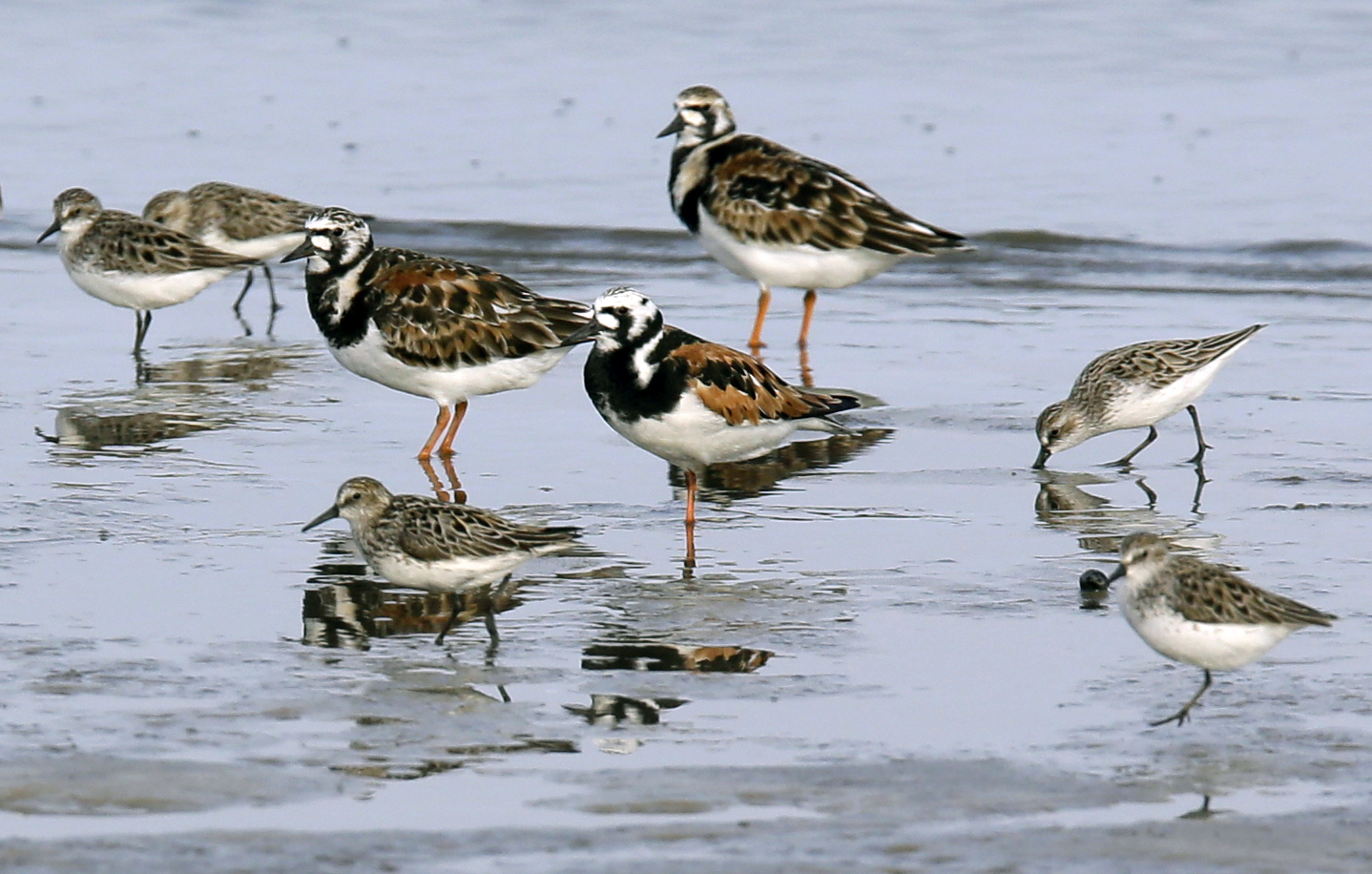Migrating birds create flu bonanza for scientists to study

In this May 22, 2018 photo, ruddy turnstones, larger birds, and semipalmated sandpipers walk near the shoreline at Kimbles Beach, Middle Township NJ. Each spring, shorebirds migrating from South America to the Arctic stop on the sands of Delaware Bay to feast on masses of horseshoe crab eggs. It’s a marvel of ecology. It’s also one of the world’s hot-spots for bird flu and a bonanza for scientists seeking clues to how influenza evolves so they just might better protect people. (AP Photo/Jacqueline Larma). (AP Photo/Jacqueline Larma)
MIDDLE TOWNSHIP, N.J. — Huge flocks of famished birds scour the sands of Delaware Bay for the tiny greenish eggs an army of horseshoe crabs lays every spring.
It’s a marvel of ecology as shorebirds migrating from South America to the Arctic time a stop critical to their survival to this mass crab spawning. It’s also one of the world’s hot spots for bird flu — a bonanza for scientists seeking clues about how influenza evolves so they just might better protect people.
“Eventually, we would like to be able to predict which would be the next pandemic,” said flu pioneer Robert Webster of St. Jude Children’s Research Hospital.
These humble beaches turn into a mixing bowl for influenza between mid-May and early June, as thousands of shorebirds and gulls crowd together and swap viruses. Researchers carefully step around the nesting crabs to scoop up the evidence — potentially flu-infected bird droppings.
“We have trained our eyes for this, that’s for sure,” said St. Jude researcher Pamela McKenzie as she bent over damp sand last month in search of the freshest samples to go on ice for later testing.
Not just any splat will do. Too dry, and tests might not be able to detect virus. Too big, and it’s likely not from the species that carries the most flu here, the calico-patterned ruddy turnstone.
Why test birds? “That’s where all flu viruses come from,” said Richard Webby, who directs St. Jude’s Center of Excellence for Influenza Research and Surveillance, a program funded by the National Institutes of Health.
Aquatic birds, including wild ducks and migrating shorebirds, are considered nature’s main reservoir for influenza.
Whether it’s the typical winter misery or a pandemic, every strain that infects humans “started off somewhere along the family tree in the aquatic bird reservoirs,” Webby said.
Usually wild birds don’t get sick, simply trading flu viruses they carry in the gut. But strains from wild birds can threaten domesticated chickens and turkeys, and every so often jump to pigs or even people.
St. Jude’s annual study at Delaware Bay offers a glimpse into little-known efforts around the world — including testing migrating ducks in China and Canada, and live poultry markets in Bangladesh — to track how bird flu circulates and changes, information that can help determine what vaccines to make for animals and people.
And nowhere else in the world have scientists found so many shorebirds carrying diverse flu strains as when red knots, ruddy turnstones and other species make their migratory stopover at this bay nestled between New Jersey and Delaware.
Most bird flu isn’t easily spread to people, stressed McKenzie, who doesn’t even wear gloves as she pooper-scoops along a beach before the tide washes back.
Still, “it’s amazing how the virus can change so rapidly, what genes they inherit,” added McKenzie, who oversees St. Jude’s global bird flu surveillance.
The U.S. stockpiles just-in-case vaccines against worrisome strains.
“It only has to happen once,” Webby said. “The right virus comes and gets into the right population which happens to fly over the right farm of turkeys which happens at the right time of year where the right farmer picks up the wrong bird — and we’re in trouble.” /muf